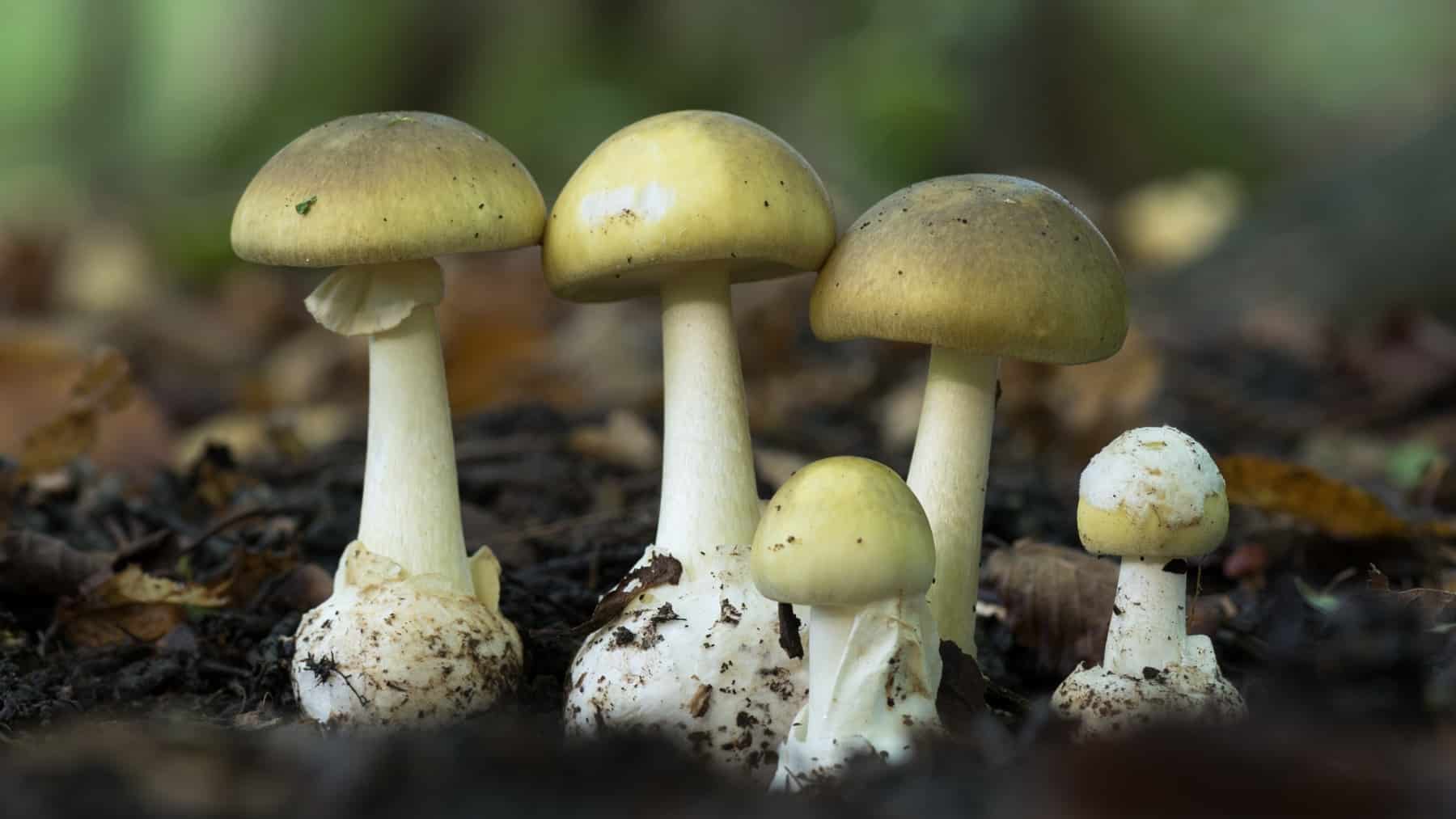Fall season is approaching, and apart from our dear Pumpkin Spice Lattes, mushrooms will soon spring up from the soil in most of our forested areas. However, this is not as jolly as you may think, thanks to the increasingly widespread presence of a particular mushroom that was once restricted only to European woods. The death cap mushroom is making itself known in green zones it had never been sighted before, and that has scientists —and local authorities— a bit worried.
You may not forage, but if you happen to take a walk through an area with this type of fungus while accompained by a dog or small child, you have to remain alert. A little nibble or collection to store in a pocket can have serious consequences.
The science behind death and the mushroom’s deadly disguise
The death cap’s scientific name is Amanita phalloides. It wears an innocent look: a smooth greenish to olive cap, white gills, a delicate skirt on the stem, and a egg-like cup at the base.
If you thought “death cap” was a bad name for a mushroom —although it is quite illustrating about its “don’t-you-dare-think-about-eaiting-it” properties— you should hear it’s scientific name: Amanita phalloides, which is botanical Latin for “hey, that mushroom looks like a phallus”. So yeah, it’s no wonder it has been renamed as something to do with dying in the diverse European languages where they need to name it: Todpilz (“death mushroom” in German), calice de la mort (“chalice of death” in French) and hongo de la muerte (“deadly mushroom” in Spanish).
Despite it’s name and reputation, it looks quite inocuous —hence its mortality rates. To the untrained eye, it simple looks like a common mushroom you might pick up at the supermarket… that is exactly the trap. The species often fruits near oaks, pines, beeches, and other ornamentals, which is why it now pops up in suburbia areas.
Why is the death cap mushroom so dangerous?
Inside the mushroom is the real threat. Its amatoxins, especially alpha-amanitin, block a core step in human and animal cells: making proteins. Early symptoms may be nausea, cramps, and diarrhea. Then a few hours of false calm can mislead victims into waiting. The crash that follows can involve liver failureand, without rapid care, the worst outcomes.
Cooking, drying, pickling, or freezing do not destroy the toxins, which is why the death cap remains dangerous even when handled like food.
Looks add to the risk. Beginners sometimes confuse the death cap with young edible mushrooms. It can resemble cultivated buttons in early stages, or the paddy-straw mushroom common in Asian cuisine.
Even skilled eyes use several features together to avoid mistakes: the cup at the base, the skirt on the stem, the white gills, and the cap’s tone. Responsible foragers say that if any feature gives doubt, the right move is to leave it in the ground.
Where did it come from? How did it get here?
The death cap is native to Europe. Over the last century and a half, it has travelled more than a sponsored influencer in Dubia thanks to global trade. Nursery trees have traveled back and forth between continents… and the soil in which they were potted has carried the spores.
It is now established on both U.S. coasts, in parts of the Pacific Northwest and Northeast, and in Australia, several Asian regions, and parts of southern Africa. Once a fungus ties in with local trees, it can fruit year after year, even if fruiting bodies are removed. That is because most of the organism lives as a hidden network of threads in the soil.
In North America, genetic studies show the death cap can pair up with a partner or, at times, reproduce on its own. This is the perfect technique for an invasive species: being able to reproduce, even when there are no counterparts to do so.
If you believe you have ingested a death cap mushroom in the USA, call Poison Control at 1-800-222-1222.

